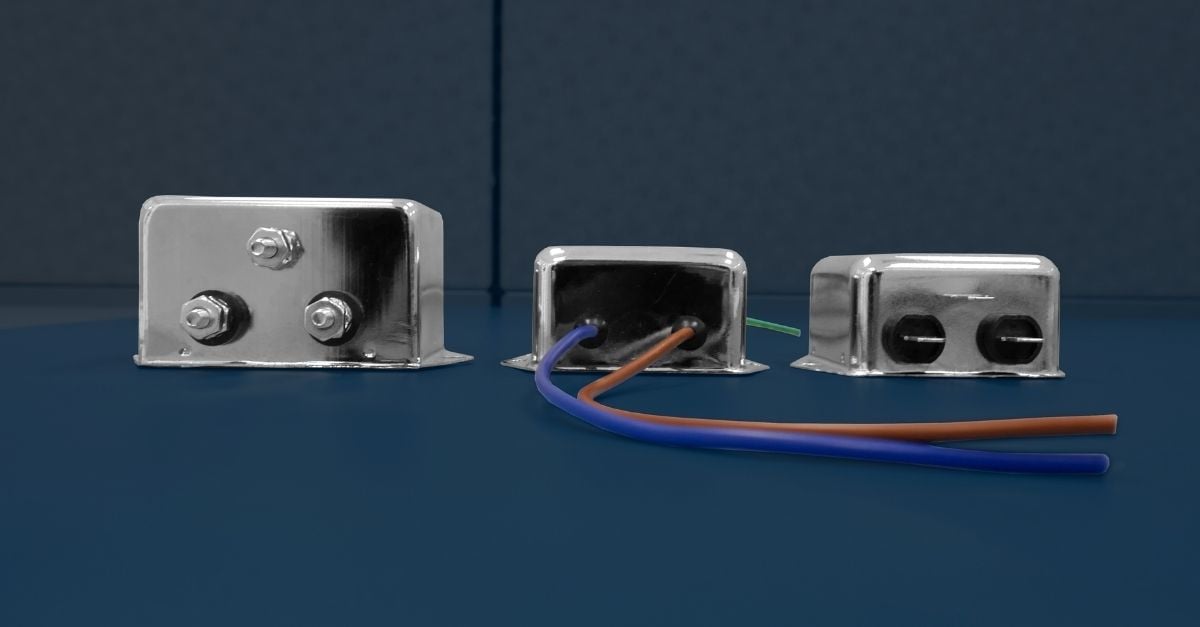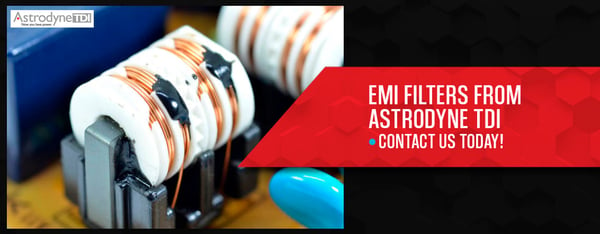RESOURCES
EMI Filter Installation Best Practices
Electromagnetic interference (EMI) filters are crucial for a wide range of equipment and devices. Installing an EMI filter helps them function as intended and prevents them from interfering with other devices. Electromagnetic compatibility (EMC) is also a key component of meeting the compliance requirements of global regulations and many industry standards. For EMI filters to provide desired performance, they must be installed correctly. Following best practices for installing EMI filters helps in optimizing their performance and ensures safe compliance margins for the devices.
EMI Filter Installation Best Practices
While certain best practices apply to almost all EMI filter installations, the installation process for each filter can be slightly different. Because of this variation, be sure to consult the product literature for the EMI filter when installing it or contact application engineering. With that in mind, here are some of the most important recommended installation practices for EMI filters.
Grounding Tips
Grounding also called earthing, is a crucial part of a system and EMI filter installation where problems often occur. To avoid these issues, keep these EMI filter installation guidelines in mind.
It's important to remember that there is a difference between an EMI/system ground and a safety ground. Safety ground is a connection or a conductor providing a path for currents to flow during a circuit fault. Interference currents occur at high frequencies, which means that typical safety ground isn’t adequate for EMI. The high impedance of these systems can result in increased radiated emissions from the system and its sensitivity to interference from external sources. For EMI, a grounding system is needed that has very low impedance for the high frequency (HF) signals. Key ground design objectives for EMC
- Minimizes Crosstalk
- Minimizes Emissions
- Minimizes Susceptibility
The following tips can help ensure proper EMI grounding:
- Use low impedance connections to connect the various parts of the ground system. Flat wires, for instance, offer lower HF impedance than round wires do.
- Ensure that all the ground connections are as short as possible. Consider using a flat, braided ground strap, as these components provide increased surface area.
- Use the largest available area as the ground conductor. The cabinet wall is often a suitable surface.
- Removing paint from mounting surfaces of the cabinets can help achieve a low impedance bond.
- To ensure safety and proper performance, make sure the power system ground is connected to the filter ground termination point before connecting any wires.
- Be sure to research and follow all relevant safety regulations related to grounding.
- Examine all the connections in your low impedance grounding systems as part of your routine maintenance checks.
Filter Wiring / Connection Tips
EMI filtering works both ways. It stops noise on the power line from getting in and stops the noise generated inside the system from going out. Since the noise predominantly travels over the power lines and is often radiated from those, filter wiring/connection becomes crucial in the EMI filter installation process. Keeping wiring best practices in mind can help to reduce a lot of potential EMI problems.
- Aim to keep power and control wiring separated. Ensure that power and control wires do not run parallel. If cables must cross, ensure that cables cross at or as close to a right angle as possible.
- Route the conductors as close to the panel as you can.
- Ensure that the filter input and output conductors are separated.
- Keep input and output leads separated.
- Use shielded wiring if necessary, especially, on the side that needs to be protected from the radiated noise.
- Ensure that the shield of shielded cables is terminated at both ends.
EMI Filter Mounting Tips
The cables and wiring inside a system including the input power cables can act as an antenna for high-frequency noise (10’s of MHz and up) radiating them through the air as well as picking them. This can pose a serious challenge for mitigating radiated as well as high frequency conducted emissions. The higher frequency (10’s pf MHz and up) noise filtered by the filter circuit can couple back on the other side (cables) via the radiated mode. This makes the installation of the filter quite critical. Keeping the following EMI filter installation recommendations in mind can ensure proper EMI filter performance:
- Mount the filter in a place that requires the shortest cable runs.
- When the aim is noise mitigation, mount the filter as close to the EMI source as possible, whether it's a drive, uninterruptible power source, inverter or another component. The farther it is, the more wiring is available for noise to propagate.
- For EMI compliance, install the filter as close to the point of power entry (POE) as possible.
- Bulkhead mount the filter to the chassis at the point of power entry with proper shielding, creating good input-output isolation.
- If bulkhead mounting is not possible, keep wires/cables at the filter input as short as possible and shield the input cables, if necessary.
- For MIL applications, use the MIL grade connector directly installed on the filter box and bulkhead mount it to the chassis.
- Shield filter output cabling if it’s picking noise from inside the system.
- Route the cables away from the know noise sources in the system.
- Mount the filter directly to a grounded bare metal panel wherever possible. The filter body acts as a ground and mounting it directly to the ground plane saves ground wires runs and creates good low impedance EMI grounding.
- Ensure that power to all the circuits in the system is supplied from the filter output side and there is no unfiltered power.
Tips Related to EMI Filter Current Ratings
To determine the current rating requirements for a filter, consider the maximum current rating specifications for the system to which it is connected. This is the maximum root mean square (RMS) amperes or horsepower rating of the load that will be connected to the filter. If there is a breaker present, the filter must always be rated to meet or exceed the breaker rating.
You can connect some types of filters in parallel to achieve higher current ratings. For this approach to work, you need to use identical filter models, and the connection must allow the filters to share the current equally. Be sure to follow the National Electric Code (NEC) and all local electrical codes throughout the process.
Benefits of Following EMI Filter Installation Best Practices
The previously EMI filter installation guidelines and best practices can provide many benefits, including:
- Appropriate installation helps in minimizing the propagation of and susceptibility to interference.
- Helps in achieving compliance with standards and regulations which is ultimately the responsibility of the installer.
- Following EMI filter installation best practices typically reduces overall costs of compliance by reducing repeated testing costs and optimizing the solution.
EMI Filters From Astrodyne TDI
Astrodyne TDI has been designing, developing and providing high-quality EMI filters for a wide range of applications, including the commercial, industrial, medical and military, for more than 50 years. Our EMI filter solutions can help in improving the EMI performance of your devices and in meeting the relevant EMC standards.
We offer both off-the-shelf and custom EMI filters. We closely work with you to determine the ideal EMI filtering solutions for your applications and offer a wide range of filter types, from small, single-phase options to industrial-grade, three-phase units. We have the engineering and design expertise to develop custom EMI filter solutions that will help your equipment meet the applicable requirements.
In addition to EMI filters, we also have an extensive range and inventory of power supplies for various applications.
To learn about our EMI filter solutions and other capabilities, contact us or request a quote today.





